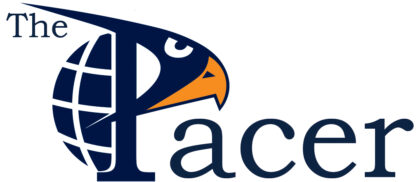The long-awaited day has come.
Student loan debt cancellation, if incoming President Biden is to be believed, may be upon us. Statements made by the incoming administration promise relief for the almost 45 million Americans who currently hold some level of student debt, but what do the new president’s promises really mean for college students? And how likely is it that they will be implemented? And if they were, what might the consequences be?
Biden’s approach can be called Sanders-lite. He shares the Vermont senator’s goal of making four years at a public institution free for most Americans and reducing student debt, although he doesn’t intend to go as far as cancelling all current federal student loan debt. It has less pomp and style and more caveats, but the “free college” program embraced by most progressive Democrats has found a place in Biden’s platform. A full breakdown of the Biden team’s proposals with all the details can be be found here.
The big highlights from the debt strategy are as follows:
- Extension of automatic forbearance.
- $10,000 in loan forgiveness for federal loan holders.
- Free tuition at a public college or university for families making under $125,000.
Automatic forbearance is essentially an administrative grace period on loan repayment. It went into effect in March as part of the government’s Coronavirus relief effort and was extended again in December. Biden has promised to extend it, although hasn’t been clear on for how long. He could, hypothetically, extend automatic forbearance until the end of the pandemic, which would be politically popular and make sense, keeping more money in the pockets of working Americans.
The proposed $10,000 in debt forgiveness also has some caveats. It only applies to undergraduate tuition, and it only applies to debt accrued at public universities and colleges (with some exceptions like historically Black colleges), and only debt-holders making less than $125,000 a year qualify. For many people with a bachelor’s or associate degree, this level of debt relief might completely cancel out their federal student loan debt. Naturally, these measures would have no effect on private student loans.
The plan for free tuition, though still a bit misty, would essentially make a bachelor’s degree free for nearly every working class student. The government would cover up to four years at a public college or university for students from families making less than $125,000 a year.
The next question is, how likely are these proposals to become a reality?
After Democrats clenched the two runoff races in Georgia, the Senate belongs to them with Vice President Harris as the tie-breaking vote. The proposed measures might be passed, like the proposed Biden COVID relief bill, through a process called “reconciliation,” which would expedite the process and make it immune to the filibuster. Whether or not there would be any Democratic or Republican defectors, however, is uncertain.
Many of the measures are within the realm of possibility, and represent key policy goals for the Democrats. With both chambers and the White House, it’s likely the measures might pass before a new Congress arrives two years later. The question, at the moment, is whether or not the Biden Administration will actually make good on these campaign promises.
In 2015, the Obama Administration floated a proposal called America’s College Promise (based on the Tennessee Promise) which promised two years of free community college. It languished and died in committee. This time around, the Democratic base and the crop of Democratic Congressmen and women seem eager to pass college tuition reform. My prognosis for these measures is that they would be relatively easy to pass, only meeting especially strong resistance from a few budget-hawks in the minority party, and would be easy political points.
The real question is: would they fix anything?
The Federal Pell Grant program started in 1965 as demand for college educations exploded. In 1960, the average total cost for a year at a public university, in current dollars, was around $900. Today, it stands at about $11,000, representing an increase of over 1000%. The availability of federal dollars for education hasn’t made tuition more affordable, just the opposite in fact.
When more federal funds are shuffled towards higher education, colleges and universities have a tendency to inflate their tuition. If the Biden Administration were to have its way with tuition schemes, what’s to say colleges don’t raise their rates again, perhaps justified by a desire to offset losses from the coronavirus pandemic?
If the administration were to go whole-hog, in a manner of speaking, and pay off all undergraduate tuition at public colleges, students would be helped immensely but that doesn’t mean colleges can’t raise rates. It just means the government (read: the taxpayers) will be perpetually paying more for the same thing. That’s assuming trends continue as they have been. If that’s the case, the students that benefit from these programs will pay the price down the road in higher tax liabilities. Arguably, that’s better than student loan debt, and a higher tax burden is likely less harmful to consumer spending than a heavy debt burden.
And what about the millions of students that owe more than the $10,000 the federal government wants to forgive? Well, they can keep holding out hope for a Sanderista government to wipe out those billions of dollars of debt, the prospects of which look pretty remote.
Biden’s proposal, if you’re going to do student debt-relief, represents a fairly sensible middle road and, more practically, stands a chance of passing congressional muster. Skyhawks should be tentatively hopeful for a windfall, although what effects these changes would have on the wider economy of higher education remain to be seen.
Photo Credit / Associated Press



